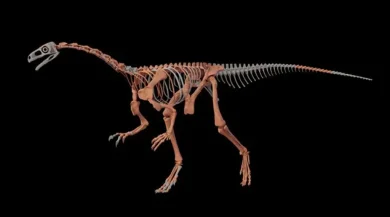
The controversy regarding the classification of Nanotyrannus lasted for decades, starting in 1946, when a small tyrannosaur skull was discovered. Although many paleontologists considered it a juvenile specimen of T. rex, the differences in bone structure and the number of teeth raised skepticism.
A recent study published in the journal Nature, conducted by researchers Lindsay Zanno and James Napoli, provided decisive evidence, demonstrating that Nanotyrannus was actually a separate, fully mature species. They also identified a second species, Nanotyrannus lethaeus, which was faster and more agile than T. rex. This discovery necessitates a reevaluation of dinosaur evolution and suggests a more diversified late Cretaceous ecosystem, with more apex predators coexisting.










